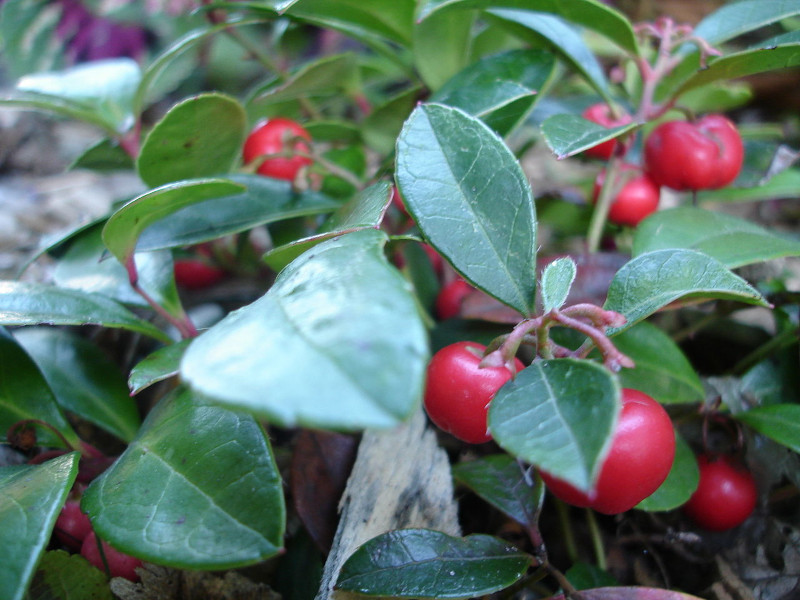American Wintergreen Facts
- This botanical beauty most frequently goes by the informative common name of the American Wintergreen throughout its range. It does have other names, though. These include such distinctive terms as checkerberry, boxberry, and the eastern teaberry.
- Many scientific professionals often refer to it by yet another term, however. These individuals, such as researchers, commonly use its technical name when speaking of it. But that’s the somewhat difficult to pronounce moniker of Gaultheria procumbens.
- The remarkable Angiosperm received that official name due to the work of the renowned Swedish botanist, Carl Linnaeus. He recorded the first formal acknowledgement of it as a separate and distinct species, as he did with many others.
- Fortunately, this stunning product of Nature and evolution appears to be maintaining a population base that’s both stable and sufficient. This pleasantly surprising state further seems to hold true throughout the entirety of its known native range.
- The IUCN, therefore, does not currently have a listing for the American Winterberry. Any such listing would appear on the organization’s published Red List of Threatened Species. That status remains open to change, however. It’s future isn’t fully secure.
- As most, if not all, species, it faces potential threats to its continued existence. These include such factors as habitat degradation or outright loss. Human expansion serves as the chief cause of these. Its greatest danger, though, likely comes from climate change.
Related Articles
American Wintergreen Physical Description
The stunning flora known as the American Wintergreen likely qualifies as one of the most easily recognized plants in its habitat range. It also possesses a distinctive visual appeal. It easily catches the eye of those who encounter it for reasons wholly other than size.
That’s because this marvelous work of evolution also ranks as a small variety of low-growing, ground hugging shrub. It’s so small, in fact, that most mature specimens only average 4 – 6 in (10 – 15 cm) in height. Nature, however, packs a lot of beauty into its small form.
It’s leaves additionally develop as evergreen in nature. This foliage also typically develops as either ovoid or elliptical in shape. Each typically ranges in length from 0.75 – 2 in (2 – 5 cm). They remain relatively narrow, though, ranging in width from 0.5 – 0.75 in (1 – 2 cm).
Distinctively, these also change color with the seasons. The color begins as a deep, forest-green shade for much of the year. In the Autumn, though, this slowly changes. As this season approaches, the leaves transform their coloring to a startlingly deep purple hue.
The deep green of the early leaves augments the beauty of the flowers it also develops. These form in early summer, remaining small. These hang in groups, in a pendulous manner. Their coloring typically presents as bright white, but a light pink sometimes appears.
The fruit of the American Wintergreen also draws attention. That’s due to the fact that this aspect of the plant develops as a bright red in color. Each remains small, though. Its dazzling berries, their color standing out from the foliage, averages 0.25 – 0.35 in (6 – 9 mm) across.
- Kingdom: Plantae
- Phylum: Tracheophytes
- Class: Angiosperms
- Order: Ericales
- Family: Ericaceae
- Genus: Gaultheria
- Species: G. procumbens
American Wintergreen Distribution, Habitat, and Ecology
The stunning American Wintergreen evolved as native to a region of the globe well known for its abundance of natural beauty. More precisely, as its most popular common name hints at, it developed, and remains solely native to, parts of the continent of North America.
Even there, though, it only appears in portions of the continent. The plant makes its natural home in the northeastern sections of Canada and the United States. It’s seen as far north as Newfoundland, westerly to Manitoba and as far to the south as the state of Alabama.
The very nature of the flora also restricts its own natural expansion. That’s true since it evolved to strongly prefer soils with a high acidity level. Most frequently, these regions occur in deciduous, hardwood or pine forests. Specimens rarely appear anywhere else, in fact.
These regions provide it with its optimal habitat requirements. The plant prefers shaded or semi-shaded areas, which such areas provide, along with the soil needs. Intriguingly, however, the amazing Angiosperm usually only produces fruit when it grows in sunny areas.
The beautiful American Wintergreen develops from rhizomes, rather than seeds. These rarely survive forest fires, leaving it vulnerable. Pollination, meanwhile, takes place due to the actions of a wide variety of insects, including beetles, flies, and various species of bee.
It also serves a vital role in its ecosystem. Many animals consume the edible fruits, though rarely in large quantities. The fruits and berries alike remain throughout the winter, providing food for numerous species. This includes deer, turkey, grouse, bear, moose, and fox.
Species Sharing Its Range
Check out our other articles on 5 Captivating Caribbean Sea Species, Sea Lamprey, Lake Como, Indo-Pacific Humpback Dolphin, Hopkin’s Rose Nudibranch, Wood Frog, Green Iguana

